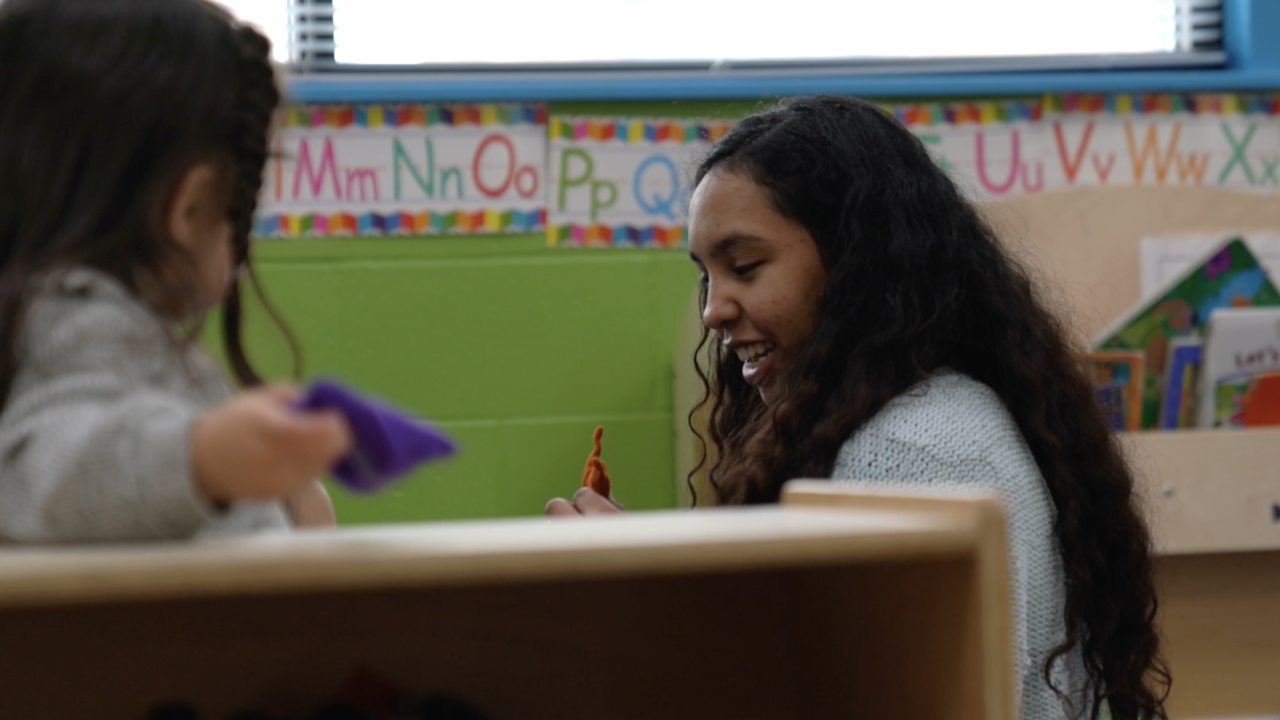When everything came to a screeching halt at the beginning of the pandemic, parents had no choice but to start in-home care. Ever since, childcare facilities have been facing many changes and trials trying to get back to pre-pandemic levels of children and staff.
Sunset Academy is one of the hundreds of thousands of childcare facilities across the nation that hit a major roadblock at the start of the pandemic. Director Samantha Emmer says Sunset Academy reopened after two months, but with very few kids and teachers.
"We went from actually being at an enrollment of 120 students, which is full capacity, to 27 when we reopened," Emmer said.
Emily Bustos leads Denver's Early Childhood Council, a nonprofit that is part of a national network called Child Care Aware of America.
"We all work to do systemic change in early childhood, as well as provide governmental grants, funding, coaching and training to early-learning providers," Bustos said. "[The pandemic] has been really rough on childcare providers. We did see some sites closing permanently after the pandemic. And right now, what we're experiencing is more of a workforce shortage crisis, if you will, around having enough qualified teachers to actually open, reopen classrooms or keep them open."
She says the best way to attract teachers is to offer a living wage and career pathways to grow. That's exactly what Emmer says they had to do at Sunset Academy.
"We would provide things like sign-on bonuses," Emmer said. "We provided opportunity for staff to be able to reach their credential of becoming a lead teacher if they reached that credential during a certain time period. We would give them another extra bonus, and so that would help us to retain them and it would give them a solid job as well."
However, paying teachers more means parents must pay more.
"The cost of child care was already unaffordable for many families, especially if they have more than one child," Bustos said. "The pandemic has sort of increased that challenge in that there again are fewer teachers, but really there is a movement to pay them more of a living wage."
According to U.S. Bureau of Labor Statistics, childcare providers made an average of $12.40 an hour in the year 2021. Bustos says the industry needs more public investment.
"I think, in general, there's a broad need for recognition of early learning services as essential for working parents, and I think we need to engage with the business community," Bustos said.
Bustos says incentive for well-trained educators is especially important due to kids returning with greater social-emotional needs.
"There's a lot more challenging behaviors that we're finding amongst the little ones," Emmer said. "So just being able to teach them and to show them positive ways of interacting with one another now, because they didn't have that, you know, some families had one child, no siblings. That child was at home alone. They didn't learn those social-emotional ways."
Emmer says there were a few benefits to the pandemic. It gave Sunset Academy an opportunity to restructure and now they're working toward becoming an English-Spanish bilingual school. She says it also helped parents to feel more sympathetic toward providers after child care was temporarily taken away.
"It can be emotionally draining sometimes," Emmer said. "Of course, it's very rewarding, but it is a lot. I think that they have a little bit of more appreciation, gratitude and understanding at what early childcare teachers really do."




